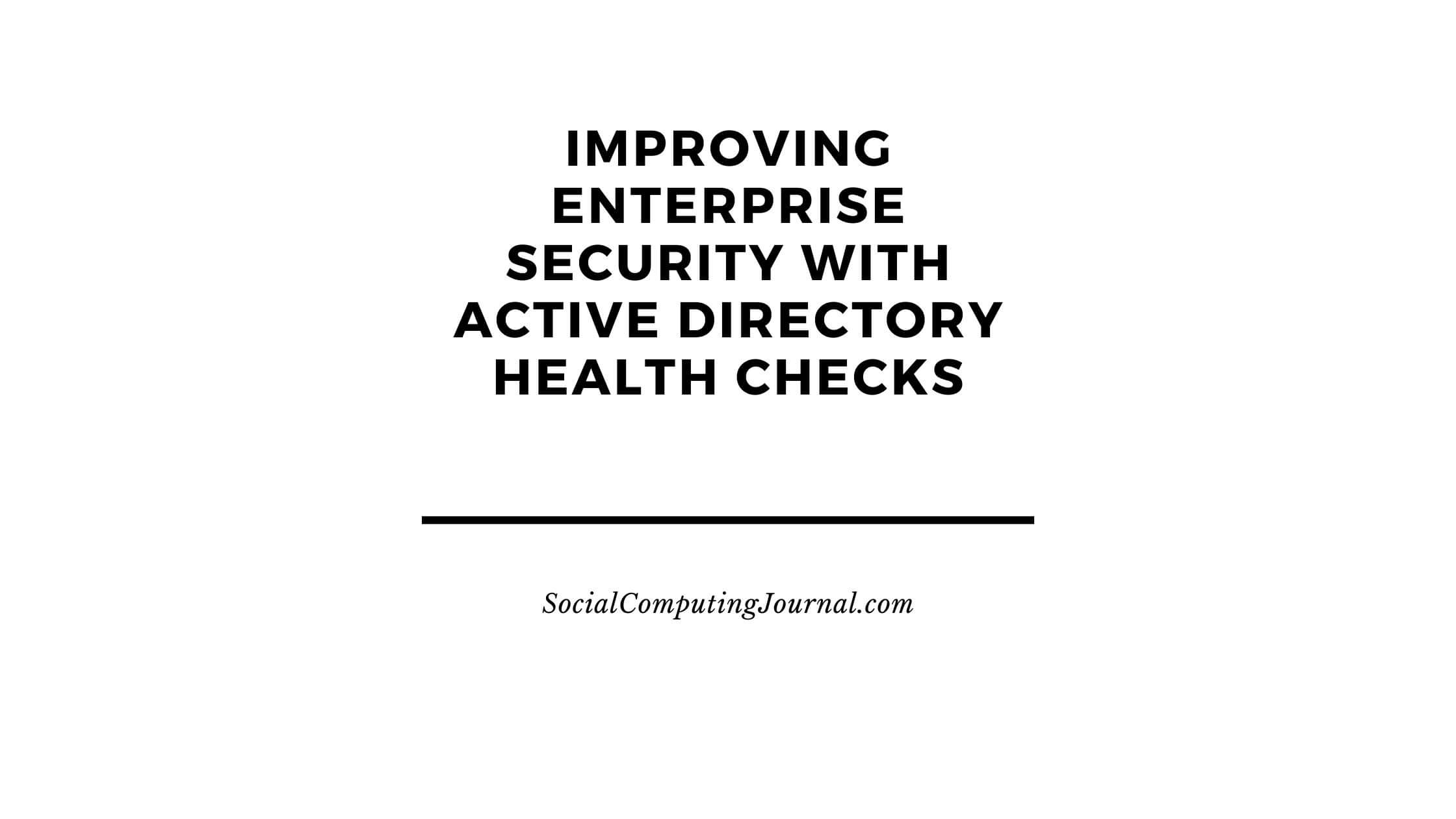In the evolving landscape of cybersecurity, organizations continue to face increasingly complex threats that exploit vulnerabilities within their internal networks. One of the most targeted and critical components in enterprise IT environments is Microsoft’s Active Directory (AD). As the backbone of user authentication and access control, AD serves as the gateway to an organization’s most sensitive data and systems. Despite its importance, it is often neglected from a security and maintenance standpoint. This oversight can open the door to potential exploitation and privilege escalation, especially if misconfigurations, stale accounts, or weak policies go unnoticed. That’s where the value of conducting a thorough AD security assessment comes into focus.
Regular health checks of Active Directory environments are not merely best practices; they are strategic imperatives for maintaining security, compliance, and operational resilience. An AD health check not only helps detect technical issues early but also strengthens the overall cybersecurity posture of an enterprise by uncovering gaps that could be exploited by malicious actors.
Contents
- 1 Why Active Directory Deserves Focus
- 2 The Anatomy of an AD Health Check
- 3 Detecting Configuration Drift and Mismanagement
- 4 Hardening Access Control and Privilege Management
- 5 Account Hygiene and Lifecycle Management
- 6 Monitoring for Signs of Compromise
- 7 Strengthening Compliance and Governance
- 8 Recommendations from the Health Check
- 9 Automating and Scaling Health Checks
- 10 Final Thoughts
Why Active Directory Deserves Focus
Organizations depend on Active Directory to manage identities, permissions, and access to resources across the network. It acts as the central point for authentication across thousands of devices, applications, and users. The complexity of AD environments—especially in large enterprises with hybrid or multi-cloud infrastructures—means they can quickly become difficult to manage without regular oversight.
Over time, AD can accumulate legacy configurations, abandoned user or computer accounts, and non-standard group policies. These overlooked elements become risk vectors, making the environment vulnerable to both internal misuse and external attacks. Moreover, sophisticated cyber threats like ransomware and lateral movement techniques often use AD as a primary means of spreading and escalating privileges within a network.
A comprehensive AD security assessment helps identify these hidden issues, offering organizations a clearer picture of their security posture and practical steps to reinforce it.
The Anatomy of an AD Health Check
An effective AD health check encompasses both operational and security-related evaluations. Operationally, it examines the performance and replication health of domain controllers, DNS configuration accuracy, and Group Policy Object (GPO) application consistency. From a security standpoint, it evaluates access controls, permission inheritance, account hygiene, and auditing practices.
These assessments should also review privileged accounts, such as Domain Admins, and check whether accounts that no longer require elevated permissions still retain them. In many breaches, attackers gain access to such accounts due to insufficient monitoring or privilege sprawl.
By combining both operational diagnostics and a security lens, an AD security assessment goes beyond just checking if services are running—it investigates whether they are running securely, efficiently, and in accordance with current best practices.
Detecting Configuration Drift and Mismanagement
One of the key insights derived from an AD health check is the detection of configuration drift. As organizations grow, merge, or adapt to new technologies, IT teams make incremental changes to AD settings. Over time, these adjustments may deviate from baseline configurations, leading to inconsistencies or even contradictions within the directory structure.
A health check surfaces these discrepancies by mapping out policies, permissions, and object configurations across the domain. It helps teams identify redundant or conflicting GPOs, analyze replication errors, and review DNS inconsistencies that might otherwise go undetected. These issues not only degrade performance but also weaken the directory’s integrity, making it harder to enforce security controls.
Additionally, configuration drift often results in excessive or unnecessary user privileges. Left unchecked, this drift can allow attackers to leverage dormant accounts or escalate permissions through the exploitation of weak group policies. Conducting a periodic AD security assessment ensures that these lapses are caught early and resolved before they can be used as entry points.
Hardening Access Control and Privilege Management
The principle of least privilege is fundamental in enterprise security, but it can be difficult to implement effectively in an AD environment without full visibility. An AD health check reveals how permissions are distributed across organizational units, security groups, and shared resources. It uncovers accounts with excessive privileges, nested group memberships that complicate auditing, and inheritance patterns that may expose sensitive data.
For example, a routine health check might uncover that a user who changed roles years ago still has write permissions to security settings or elevated access to system-level folders. Without tools to surface these hidden entitlements, such risks may persist indefinitely.
An AD security assessment also scrutinizes service accounts, which often have high privileges and run critical applications. These accounts are frequently overlooked during routine audits, making them prime targets for attackers. Health checks analyze whether service accounts are using outdated passwords, whether they’re tied to unmonitored applications, and whether they follow current password policies.
Account Hygiene and Lifecycle Management
Account hygiene is another area where AD health checks provide substantial value. Over time, user accounts accumulate in the directory, including those of former employees, temporary contractors, and testing environments. These stale or orphaned accounts are high-risk because they often escape notice during offboarding or IT audits.
An AD health check helps identify:
- Dormant user and computer accounts
- Duplicate or conflicting account entries
- Accounts with never-expiring passwords
- Non-compliant password policies
- Accounts that haven’t logged in for extended periods
Addressing these issues reduces the attack surface significantly. A smaller, well-maintained directory is easier to monitor, audit, and secure. Furthermore, proper account lifecycle management strengthens compliance with regulatory requirements like GDPR, HIPAA, and SOX, all of which mandate strict access control and user data handling protocols.
Conducting a regular AD security assessment ensures that old accounts are deactivated, removed, or re-assigned based on legitimate organizational need, rather than lingering indefinitely as potential security risks.
Monitoring for Signs of Compromise
While most AD health checks focus on proactive maintenance, they also serve a vital role in detecting signs of compromise. For instance, unusual changes in group membership, the sudden creation of high-privilege accounts, or inconsistent login patterns may indicate malicious activity.
Advanced health check tools often integrate with SIEM (Security Information and Event Management) systems or endpoint detection platforms to correlate these changes with other system events. This integration allows security teams to flag anomalies early and launch investigations before attackers can fully establish a foothold in the network.
Moreover, an AD security assessment might reveal deficiencies in auditing and logging. Without proper event logging, it’s impossible to track failed logins, administrative changes, or user account creation—data that is essential for forensic analysis during or after a breach.
Ensuring that audit logs are enabled, securely stored, and actively monitored is a key outcome of any thorough AD evaluation. Combined with threat detection mechanisms, this proactive stance dramatically improves an organization’s ability to detect and respond to insider threats or advanced persistent threats (APTs).
Strengthening Compliance and Governance
Beyond technical security, an AD health check also supports regulatory and governance objectives. Many data protection laws require that organizations maintain an accurate record of who has access to what information and how access is granted. Active Directory plays a central role in enforcing these controls, so it must be in compliance with both internal and external policies.
A formal AD security assessment provides documentation that proves due diligence in managing access rights and maintaining control over sensitive data. This can be invaluable during regulatory audits or internal reviews. Furthermore, the assessment can reveal misalignments between business policies and technical implementations, prompting organizations to revise procedures or update policies accordingly.
By aligning security practices with compliance goals, enterprises not only reduce legal risk but also build stronger internal controls that support long-term data protection.
Recommendations from the Health Check
After completing an AD health check, organizations should receive a comprehensive report detailing all findings, categorized by severity and potential impact. These reports typically offer actionable recommendations such as:
- Disabling or removing inactive accounts
- Reducing unnecessary group memberships
- Correcting misconfigured GPOs
- Tightening access permissions
- Enabling or improving audit logging
- Implementing stronger password policies
- Updating or patching domain controllers
These prioritized actions allow security teams to address high-risk vulnerabilities immediately while planning long-term improvements. Periodic follow-up assessments should also be scheduled to validate remediation efforts and ensure continued alignment with best practices.
Automating and Scaling Health Checks
Manual health checks can be labor-intensive and prone to human error, especially in large or hybrid environments. Fortunately, there are a variety of automated tools designed to streamline the process. These tools offer continuous monitoring, real-time alerting, and customizable dashboards that provide visibility across the entire AD ecosystem.
Automation enables organizations to move from a reactive posture to a proactive one. Instead of waiting for a scheduled audit, IT teams can receive alerts the moment a high-risk change occurs—such as a user being added to a privileged group or a GPO being altered unexpectedly.
By integrating automated AD security assessments into regular security operations, enterprises gain a scalable way to maintain integrity, reduce workload, and stay one step ahead of evolving threats.
Final Thoughts
Active Directory remains a cornerstone of enterprise IT infrastructure. Yet, it is often taken for granted until a security incident forces a closer examination. Regular health checks are not just a technical necessity—they are a strategic investment in the overall resilience of an organization.
An AD security assessment offers deep visibility into potential vulnerabilities, from misconfigurations to dormant accounts and excessive permissions. It empowers security and IT teams with the insights needed to harden access controls, improve compliance, and reduce risk exposure.
In a digital world where breaches can cost millions and tarnish reputations, organizations must prioritize AD health checks as part of their standard cybersecurity playbook. By taking a proactive and methodical approach to assessing and securing Active Directory, enterprises can protect one of their most valuable and vulnerable assets—and create a stronger, safer foundation for the future.






